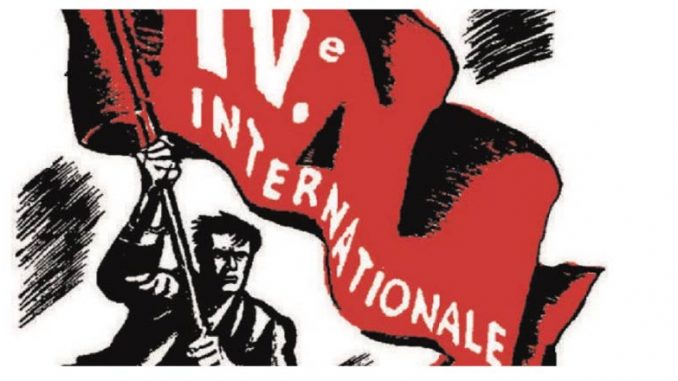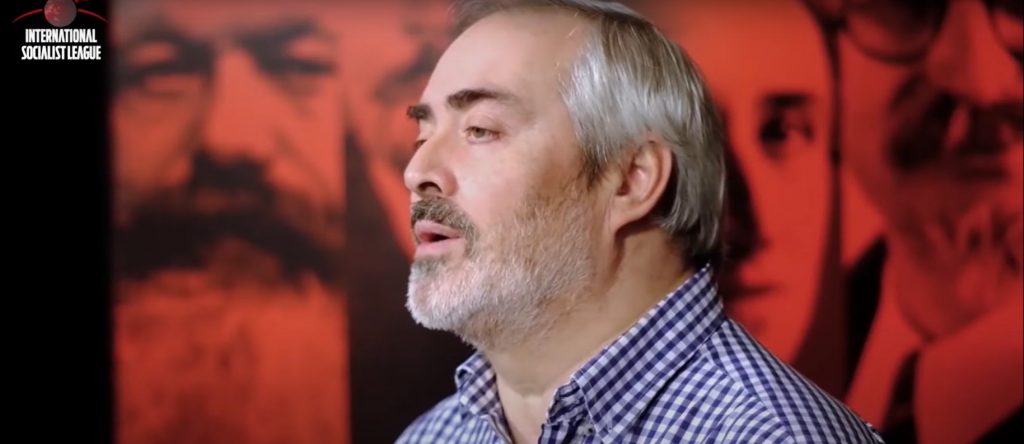
We publish here the report our comrade Alejandro Bodart gave on the founding of the IV International on the Thursday, September 3 edition of International Panorama, the program of the International Socialist League.

On a day like today, on September 3, 1938, the Fourth International was founded in a rushed and clandestine meeting outside of Paris. Delegates from organizations of eleven countries gathered at the home of left opposition militant Alfred Rosmer, and organizations from another 17 countries were unable to attend but adhered to the new organization and its program.
The world was going through an acute crisis: the rise of Nazism in Germany, the civil war in Spain was being led into a dead end by Stalinism and the accumulation of contradictions would lead in a short time to World War II… But the founding congress of the Fourth International didn´t discuss any of that. Assembled under intense persecution by Stalinism, it was limited to approving a program and voting a secretariat to conclude the meeting before being discovered and attacked. Trotsky´s son, the main leader of the left opposition in Europe and man in charge of the preparations for the congress, Leon Sedov, had been assassinated in Paris a few months earlier. And days before the event, the body of Rudolf Klement, another of the main organizers who had been disappeared a month earlier, was found in the River Seine. The congress was almost canceled.
In fact, several sectors of the regrouping of communists that had broken with Stalinism and were part of the international left opposition, believed that it was not the right time to launch a new international.
The First International was founded in 1864 by Marx and Engels in the midst of the first rise of the working class, fueled by the European industrial revolution.
The Second International, after Marx´s death, but with the participation of Engels, was founded in 1889. It arose on the basis of the capitalist expansion of the late 19th century, the industrialization of Germany and the growth of mass unions and workers’ parties.
The Third International, founded in 1919 by Lenin and Trotsky, was driven by the triumph of the Russian revolution and the global upheaval it generated.
When Trotsky proposed launching the Fourth, there was no rise. Fascism had just defeated the working class, with the help of the betrayals of Stalinism, in Italy, in Germany, and it was about to achieve the same in Spain. However, it was precisely Hitler’s triumph in Germany that convinced Trotsky, on the one hand, that the Third International was already unrecoverable, and on the other, that the founding of a new International was necessary and urgent.
Since his expulsion from the USSR in 1929, Trotsky began to organize the left opposition on an international scale. The following year, a first international conference of the current was held, which voted a secretariat with Alfred Rosmer and León Sedov.
In 1932, a new conference was held in Denmark, in which Trotsky himself was able to participate. The following year, another conference established the resolutions of the first four congresses of the Third International as its programmatic base. Until then, although they were expelled and excluded from the parties of the Third International, and persecuted by Stalinism, they acted as a current of opposition and maintained the orientation of recovering the Communist Parties and the Third International.
Only after Hitler’s victory, without active resistance by the German Communist Party, which had rejected any united front policy against fascism, was the formation of a new international decided.
Trotsky characterized that the world was heading toward a Second World War, that Stalinism, with the policy it had been employing, would play the same treacherous role that the Second International played in the First World War, and that therefore, revolutionaries needed their their own parties and their own international organization to influence the revolutions to come.
In this context, a new conference met in Paris in August 1933, in which various currents opposed to Stalinism participated. The document that emerged from that meeting expressed the will to move towards a new international organization, but the initiative was delayed by the persecution of Stalinism and the fascists, and by the hesitations of the sectors that were not convinced to advance.
The first Conference for the Fourth International met in Geneva in July 1936, and the founding congress finally took place two years later, when the outbreak of World War II was already looming.
Trotsky’s text that the meeting approved as the programmatic base of the new organization is known to the international revolutionary movement as the Transitional Program. Its title, “The agony of capitalism and the tasks of the Fourth International” presented a characterization of where the world was going that would be confirmed in its fundamental features.
It affirmed that the productive forces had ceased to develop, that the economic crisis would lead to a new humanitarian catastrophe leading to a new world war, and that if the triumph of socialism did not occur, human civilization itself would be in question. Both the World War that broke out the following year and the current crisis validate this forecast.
But the Transitional Program also asserted that, though the objective conditions for the triumph of the revolution were more than mature, they are insufficient if the subjective factor, the revolutionary organization and the action of the proletariat do not exist. The experience of the Russian revolution had imposed the decisive conclusion that without a revolutionary party in the lead, the socialist revolution fails and retreats.
Trotsky took this as a central axis, forever burying the division that social democracy made between a minimum program of immediate reforms and a maximum program of abstract socialist objectives for an indeterminate future. And it replaced it with a new method of political elaboration and intervention that, starting from the immediate needs of the proletariat, leads it to a global confrontation with capitalism. This method has proven its usefulness in developing the class struggle and building revolutionary parties to this day.
Tragically, Trotsky would be assassinated by Stalinism just two years after founding the Fourth International, and the distance between his experience and ability, and that of the cadres who continued his work, was enormous. To make matters worse, many of them would perish during the war at the hands of Hitler’s Gestapo or Stalin’s KGB. The Fourth International was decimated and effectively paralyzed during the war. And when it reorganized at its end, its leaders turned out to not be up to the difficult circumstances.
Due to the lack of an organized revolutionary alternative, the revolutions that swept Europe and the world after the war did not lead workers to overrun the Stalinist bureaucracy. On the contrary, it came out strengthened and prestigious for having defeated Hitler. It was thus able to put itself at the head of the revolutions, stop them, divert them, betray them, and fulfill its pact with imperialism to rebuild the bourgeois states in Western Europe after the war.
These difficult circumstances were compounded by a series of tremendous errors on the part of the leadership of the Fourth International, which ended up dividing and dispersing the Trotskyist movement. Some fell into opportunism, following the variants of Stalinism that emerged. Others secluded into sectarianism, marginalizing themselves from the mass processes. Others abandoned the strategy of building a revolutionary party, or limited themselves to the construction of national parties, abandoning the indispensable task of building the international.
Those of us who continued the struggle to build a world revolutionary party did so separately, building international currents centered on a more developed party with like-minded groups in other countries.
The founding of the Fourth International had the enormous merit of preserving the conclusions and tradition of revolutionary Marxism. Those of us who have continued this practice alive have the same merit. But this is not enough. Today, faced with the catastrophic crisis of world capitalism, only comparable to the one that ravaged the world when the Fourth was founded, recovering its legacy requires us to overcome the limitations we have had.
This is the challenge that the ISL is facing in trying to regroup the revolutionaries who come from different experiences and traditions, from different currents of Trotskyism, on the basis of a principled program for the socialist revolution.
On the strategy of building Leninist parties and a revolutionary international.
And on the commitment to carry out a militant, active internationalism, of campaigns and intervention in the class struggle. Knowing that, on these bases, we can have partial divergences that can be debated, that in this way we can learn from each other, and that only in this way, can we build a real world revolutionary organization that aspires to lead the socialist revolution.








